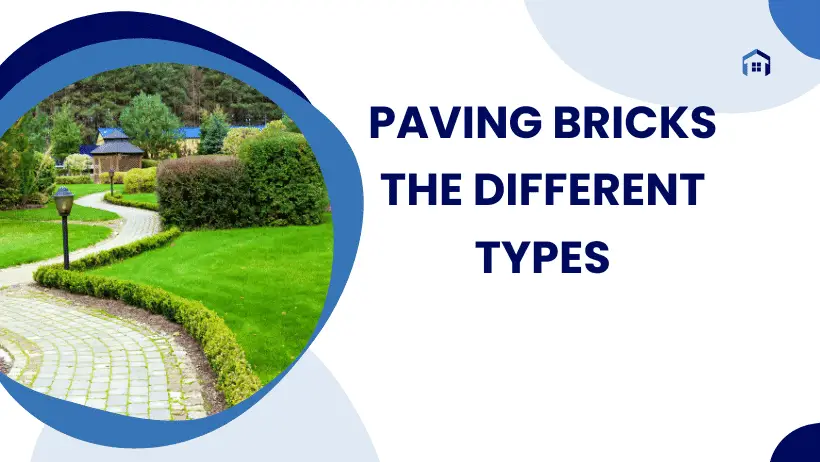Paving bricks are a type of construction material used to create hard surfaces for pedestrian and vehicular traffic. Paving bricks come in a variety of Different Types , sizes, and colors, and can be used to create a wide range of designs and patterns on sidewalks, patios, driveways, and other outdoor surfaces. They are often preferred over concrete or asphalt because they are more aesthetically pleasing, environmentally friendly, and can be easily replaced if damaged.
The Different Types of Paving Bricks and What There Made of
There are several different types of bricks for paving, each with its own unique characteristics and uses. Here are some common types:
What are the Different Types of Paving Bricks
There are several different types of paving bricks, each with its own unique characteristics and uses.
Clay paving brick:
These are made from natural clay and are known for their durability and resistance to fading. They come in a range of colors and can be used for both residential and commercial paving projects.
Concrete paving brick:
These are made from cement and aggregates, and are often used for heavy-duty applications such as driveways and parking lots. They come in a variety of colors and shapes, and can be designed to mimic the look of natural stone or brick.
Cobblestone paving brick:
These are made from natural stone and are known for their rustic, old-world look. They come in irregular shapes and sizes, and can be used for driveways, walkways, and patios.
Interlocking paving brick:
These are designed to fit together like puzzle pieces, creating a strong, stable surface that can withstand heavy traffic. They are often made from concrete or clay, and come in a variety of colors and patterns.
Permeable paving brick:
These are designed to allow water to pass through them, reducing the amount of runoff and helping to prevent erosion. They can be made from a variety of materials, including concrete, clay, and recycled plastic.
Grass paving brick:
These are designed to allow grass or other vegetation to grow between them, creating a natural, eco-friendly surface. They are often used for driveways, parking lots, and other areas where a green space is desired.
A Brief History of the Paving Brick
The use of bricks for paving dates back to ancient civilizations such as the Romans, who used them to build roads, walkways, and other public spaces. However, the modern paving brick as we know it today was first developed in the 19th century, when the Industrial Revolution led to advances in brick-making technology.
In the mid-1800s, the invention of the hydraulic press allowed manufacturers to produce uniform, high-quality bricks on a large scale. This led to the development of concrete paving bricks, which quickly gained popularity due to their durability, low cost, and ease of installation. By the early 1900s, paving bricks were being used in cities throughout Europe and North America to create sidewalks, streets, and other public spaces.
In the decades that followed, new types of paving bricks were developed using materials such as clay, natural stone, and recycled plastic. These bricks offered a range of aesthetic and environmental benefits, and helped to further popularize the use of paving bricks in landscaping and urban design.
Today, paving bricks continue to be a popular choice for creating durable, attractive outdoor surfaces. They are used in a wide range of applications, from residential driveways and walkways to commercial plazas and municipal parks.
Pros and Cons
| Pros | Cons |
|---|---|
| Durable and long-lasting | Higher upfront cost compared to some other materials |
| Can be easily replaced if damaged | Installation may require a skilled professional |
| Aesthetically pleasing and versatile | Weeds and grass can grow between bricks if not properly maintained |
| Environmentally friendly | Can become slippery when wet |
| Permeable options available for drainage | Not suitable for heavy vehicular traffic |
| Can increase property value and curb appeal | Regular maintenance required to prevent staining and discoloration |
It’s important to note that the pros and cons of paving bricks can vary depending on the specific product and installation. Factors such as climate, soil conditions, and foot or vehicular traffic can all impact the performance and lifespan of paving bricks. It’s important to carefully consider these factors when choosing a paving material for your project.
Cost of Paving Bricks
The cost of paving bricks can vary widely depending on a number of factors, including the type of brick, the size of the project, and the location of the installation. Generally speaking, clay bricks tend to be more expensive than concrete bricks, and larger projects will typically have a lower cost per square foot than smaller projects.
As a rough estimate, the cost of block paved driveways typically ranges from £20 to £100 per square meter, while the cost of clay paving bricks can range from £65 to $200 per square meter. However, these prices can vary significantly depending on the specific product and installation costs in your area.
Find info on Paving Contractors and How to Choose the Right 1
It’s important to note that while the upfront cost of paving bricks may be higher than other materials such as concrete or asphalt, they often offer significant long-term cost savings due to their durability and low maintenance requirements. Additionally, the aesthetic appeal and value that they add to a property may also justify the higher initial investment.
Author Profile

- I have many qualifications and certificates in construction, such as City & Guilds, CPCS and CITB. These are the highest standards of training and competence in the industry. Whether you need help with plumbing, carpentry, bricklaying or any other trade, I’m here to help you succeed.
Latest entries
- March 6, 2024CalculatorsWall Tile Calculator: How Many Wall Tiles Do You Need
- February 29, 2024Roof Truss Cost Calculator
- December 31, 2023Wage Take Home Calculator
- December 30, 2023Day Rate Calculator


Comments are closed.